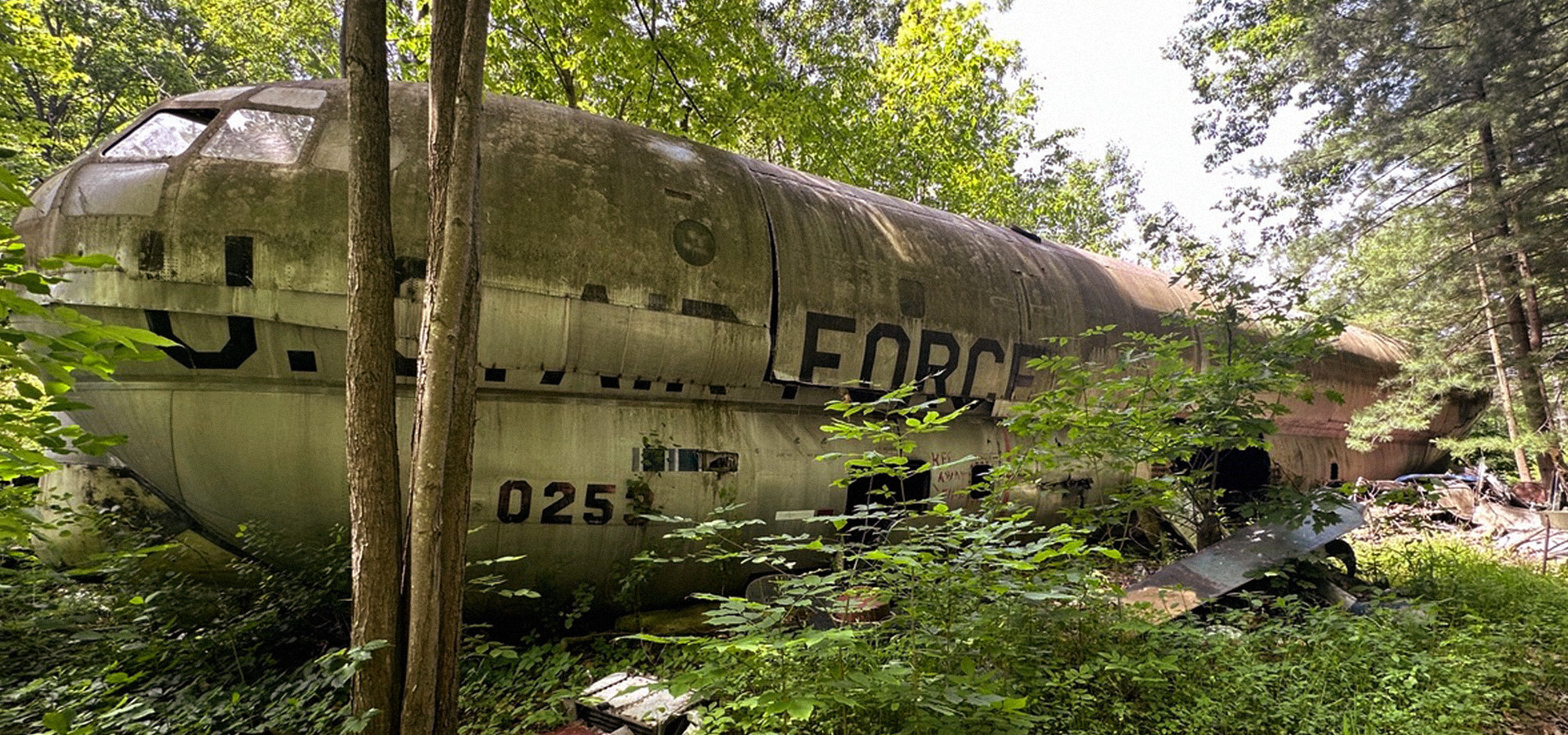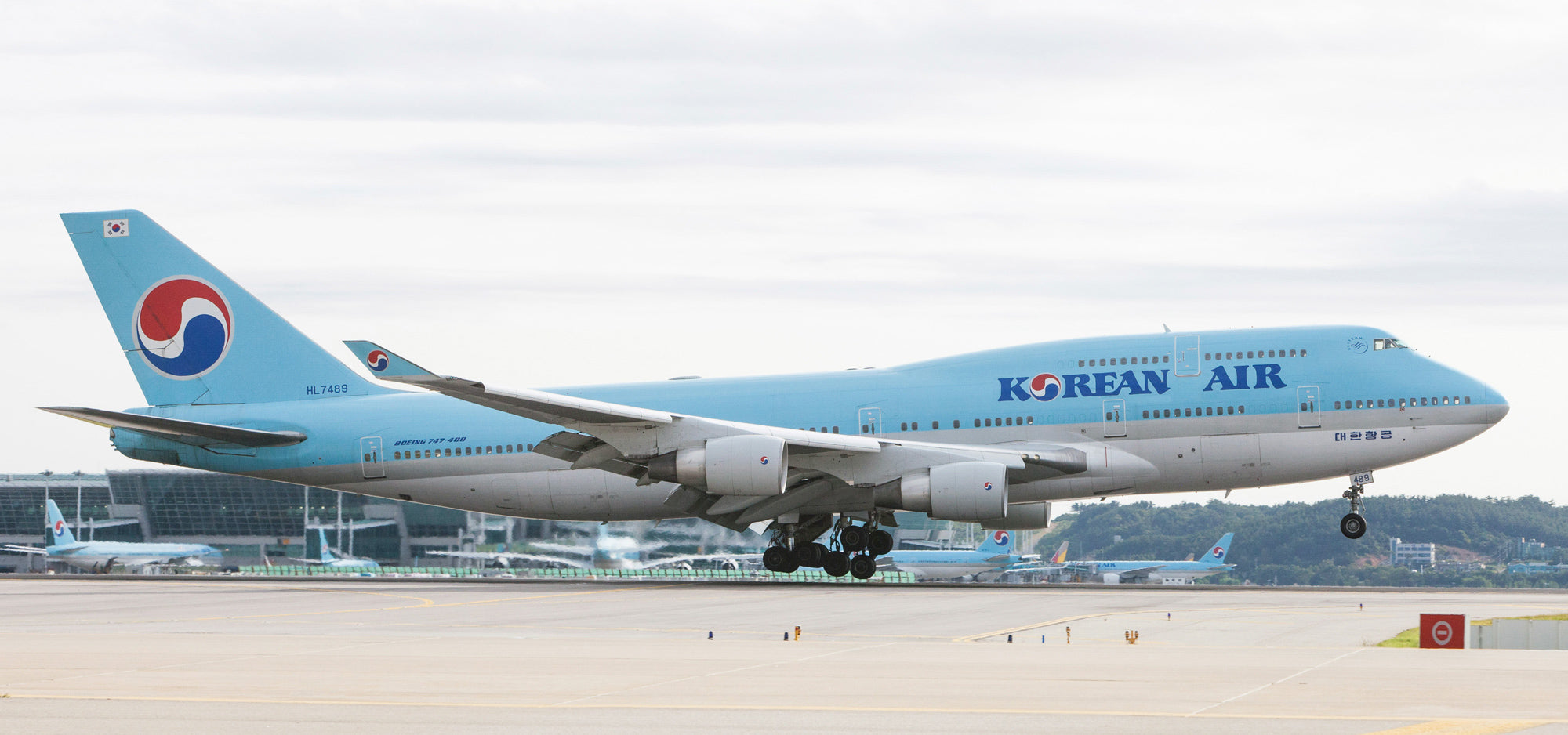The Bell AH-1W SuperCobra has long been a symbol of the United States Marine Corps’ strength and precision. This twin-engine attack helicopter carved out a legendary role in modern military aviation, delivering firepower and support in some of the most intense combat zones of the past three decades. Now, one of these battle-hardened aircraft, Bureau Number 163941, is being preserved in a whole new way.
MotoArt is proud to introduce the Bell AH-1W SuperCobra PlaneTags, crafted from a helicopter that flew into combat during both Operation Iraqi Freedom and Operation Enduring Freedom. In this blog, we’re diving into the history and legacy of the SuperCobra, exploring its global deployments, spotlighting BuNo 163941’s service, and sharing how it became part of the PlaneTags collection.
About the Bell AH-1W SuperCobra

A USMC AH-1W Super Cobra helicopter armed with AGM-114 Hellfire missiles and 2.75-inch Folding Fin Aerial Rockets (FFAR) awaits refueling at a Forward Area Refueling Point (FARP), at Tallil Air Base, Iraq during Operation IRAQI FREEDOM. A US Army (USA) UH-60 Black Hawk helicopter is on approach in the background. Photo by SSGT SHANE CUOMO, USAF - Link to Image, Public Domain, Link
The AH-1W SuperCobra is a twin-engine attack helicopter developed by Bell Helicopter for the U.S. Marine Corps. A modern evolution of the Vietnam-era AH-1 Cobra, the SuperCobra was built for speed, survivability, and firepower — the ideal companion to fast-moving Marine operations. It played a critical role in close air support, anti-armor missions, convoy escort, and nighttime strike operations.
With a tandem cockpit, streamlined frame, and heavy weapons loadout, the SuperCobra brought Marine pilots dangerously close to the action, and gave ground troops the reassurance of precision firepower from above. Its arsenal included a 20mm M197 three-barrel rotary cannon, Hydra 70 rocket pods, and both TOW and Hellfire missile systems, allowing it to take out tanks, bunkers, and infantry from a distance.
The AH-1W was also loaded with cutting-edge avionics for its time, including night vision capabilities, thermal imaging, helmet-mounted displays, and real-time targeting systems. These upgrades allowed it to operate in all weather and lighting conditions, often in tandem with other aircraft or ground units. In the close quarters of urban warfare and the rugged terrain of Afghanistan, its agility and compact size gave it a distinct edge.
Unlike the Army’s larger AH-64 Apache, the SuperCobra was designed for shipboard operations and fast deployment, making it a key asset for Marine Expeditionary Units around the world. With twin-engine redundancy, it could return home even after taking damage, a feature that earned it the trust of pilots and commanders alike.
Approximately 179 AH-1Ws were built by Bell in Fort Worth, Texas, with the first entering service in 1986. It remained active until 2020, replaced by the next-generation AH-1Z Viper. During its long service life, the SuperCobra proved itself in nearly every conflict the U.S. engaged in, a testament to its effectiveness and staying power.

AH-1W USMC flickr photo by Rob Schleiffert shared under a Creative Commons (BY-NC-ND) license
Development and Legacy
The Bell AH-1W SuperCobra traces its lineage back to one of the most iconic helicopters in aviation history — the UH-1 Iroquois, better known as the Huey. Originally developed in the late 1950s, the Huey family quickly became synonymous with the Vietnam War and was widely used for troop transport, medical evacuation, and close air support. However, as the conflict intensified, it became clear that a dedicated gunship was needed.
This led to the development of the AH-1 Cobra — a slimmer, faster, and more heavily armed version of the Huey designed specifically for offensive missions. First flown in 1965, the AH-1 was adopted by the U.S. Army and proved devastatingly effective in Vietnam. Its tandem-seat cockpit, narrow fuselage, and powerful weapons systems made it the first purpose-built attack helicopter in the world.
The U.S. Marine Corps quickly took notice. Needing a more capable aircraft for shipboard operations and overwater missions, the Marines requested a twin-engine version for increased safety and performance. This kicked off a series of USMC-specific variants under the “SeaCobra” designation:
-
AH-1J SeaCobra: Introduced in the early 1970s with a twin-engine layout and improved power for carrier operations.
-
AH-1T Improved SeaCobra: Brought extended range, better avionics, and increased payload capacity.
-
AH-1W SuperCobra: Developed in the 1980s as part of the Twin Cobra program, which sought to further modernize the platform with enhanced firepower, survivability, and night-fighting capabilities.

Bell | AH-1W | Super Cobra | 162544 | United States Marine Corps | Hong Kong | China flickr photo by Christian Junker | Photography shared under a Creative Commons (BY-NC-ND) license
The Twin Cobra initiative was Bell’s response to the Marine Corps’ need for a more versatile and lethal platform without starting from scratch. The AH-1W retained the proven airframe of its predecessors but added twin T700-GE-401 turboshaft engines, upgraded night vision and targeting systems, and compatibility with precision-guided munitions.
Beyond the U.S., other variants of the Cobra platform also served globally:
-
AH-1F: Upgraded U.S. Army version of the single-engine Cobra with enhanced avionics and weapons systems.
-
AH-1Z: Later models developed for the Marine Corps, with the AH-1Z Viper becoming the current-generation platform with a four-bladed rotor system and digital cockpit.
From its roots in the Huey to its peak as the SuperCobra, the AH-1 series represents over five decades of rotary-wing innovation. It evolved not just with technology, but with the needs of warfighters across generations and battlefields.
Bell AH-1W SuperCobra At A Glance

Bell AH-1W Characteristics:
- Manufacturer: Bell
- Model: AH-1W
- BuNo: 163941
- Crew: 2 (1x Pilot, 1X Co-pilot/gunner)
- Rotor Diameter: 48 ft 0 in w/2 Blades
- Tail Rotor Diameter: 9 ft 9 in w/2 Blades
- Length: 44 ft 7 in
- Height: 13 ft 9 in
- Armament: 1x 20MM M197 3-Barrel Gatling Cannon w/750 rounds, 7x-16x 2.75in Hydra 70 or APKWS II Rockets, or 8x Zuni Rockets, or 8x Tow Missiles, or 8x AGM-114 Hellfire Missiles, or 2x AIM-9 Sidewinder Anti-Aircraft Missiles
Bell AH-1W Super Cobra Performance:
- Range: 365 mi
- Cruise Speed: 175 mph
- Ceiling: 12,200 ft
- Empty Weight: 10,200 lb
- Max Takeoff Weight: 14,750 lb
- Rate of Climb: 1,620 ft / min
- Engine: 2x General Electric T700-GE-401 Turboshaft
A World at War: Where the SuperCobra Served
From the final years of the Cold War through the dawn of 21st-century counterinsurgency operations, the AH-1W SuperCobra played a pivotal role in U.S. military strategy across the globe. As conflicts evolved and battlefields shifted from open desert to urban terrain and mountainous regions, the SuperCobra adapted, proving itself time and again in intense, unpredictable environments.

011125-M-4912C-007 flickr photo by ChuckHolton shared under a Creative Commons (BY-NC-SA) license
The SuperCobra was deployed in a wide range of combat and peacekeeping operations, including:
-
Operation Desert Storm (1991): SuperCobras flew combat sorties in Iraq and Kuwait, destroying enemy armor and providing close air support to Marine ground forces.
-
Operation Restore Hope (1992–1994): In Somalia, AH-1Ws escorted humanitarian missions and protected U.S. and allied forces in dangerous conditions.
-
Operation Iraqi Freedom (2003–2011): SuperCobras were a constant presence, supporting Marines in street-to-street fighting, convoy escorts, and nighttime raids.
-
Operation Enduring Freedom (2001–2014): In the rugged mountains of Afghanistan, they delivered air support with precision and speed in some of the world’s most challenging terrain.
Stationed aboard amphibious assault ships, forward operating bases, and remote outposts, the SuperCobra’s compact frame and firepower made it an ideal choice for the expeditionary nature of the Marine Corps.
BuNo 163941
Among the fleet of SuperCobras that served with distinction, Bureau Number 163941 stands out as a combat veteran with a celebrated history. This helicopter flew with several of the Marine Corps’ most respected Light Attack Helicopter Squadrons and was an active participant in some of the defining conflicts of the early 2000s.

AH-1W Super Cobra in Afghanistan flickr photo by United States Marine Corps Official Page shared as a Public Domain United States Government Work (PD)
-
Operation Iraqi Freedom: BuNo 163941 served with HML/A-169, known as the “Vipers,” during its deployment to Iraq. These missions placed the helicopter directly in support of Marines on the ground, in an environment where speed, coordination, and accuracy meant life or death.
-
Operation Enduring Freedom: After Iraq, the aircraft was reassigned to HML/A-267, the “Stingers,” and continued its combat service in Afghanistan, supporting U.S. and coalition forces with close air support and reconnaissance capabilities.
-
In its final years, BuNo 163941 was flown by HML/A-369, the “Gunfighters,” a unit known for its operational readiness and deployment tempo.

Photo courtesy of U.S. Central Command
While specific mission details remain classified, this aircraft’s combat record is clear: it flew into hostile territory, protected troops, and carried out vital missions in two major conflicts. In 2025, MotoArt respectfully preserved BuNo 163941, transforming it into collectible PlaneTags that tell the story of a true warrior.
MotoArt Finds a Bell SuperCobra Helicopter

When MotoArt’s team discovered BuNo 163941, they recognized it as more than just another airframe. It was a rare opportunity to preserve a helicopter that had truly served on the front lines of history. After years of service, 163941 had been retired and was awaiting an uncertain fate. MotoArt stepped in to ensure that the legacy of this AH-1W would be honored.

With the same care and attention given to all of our historic aircraft projects, our team disassembled the helicopter, salvaging portions of the fuselage to be transformed into authentic PlaneTags. Each tag carries with it the marks of service and the spirit of the SuperCobra.




"It’s always a privilege to preserve aircraft that served with distinction," said Dave Hall, MotoArt founder. "This SuperCobra flew in two major wars. It deserved to be remembered and appreciated by those who understand its role in history."

Bell AH-1W SuperCobra PlaneTags
The AH-1W SuperCobra PlaneTags are crafted from the authentic skin of BuNo 163941. Each tag is unique, bearing the character and wear of the aircraft’s service. They are laser-engraved with the aircraft type and serial, and available in a variety of color variations drawn from different areas of the airframe.
Collectors can choose from standard colors (and rare colors if you grab them at release time), as well as with custom engraving options. Whether you’re a military enthusiast, helicopter collector, or aviation history buff, these PlaneTags are a chance to own a piece of a battle-tested legend.
Whirlybird PlaneTags: Why Collectors Love Helicopters
Rotorcraft have a special place in the hearts of collectors, especially those with real-world combat and rescue experience. Their engineering, utility, and distinctive silhouettes make them standout additions to any PlaneTags collection. Helicopters are also less frequently available than fixed-wing aircraft, making each release something truly special.
MotoArt has proudly preserved a growing list of historic helicopters, including:
-
CH-21B Workhorse
-
HUP-3 Retriever
-
Vertol YUH-61
-
S-60 Flying Crane
-
MD 530F “Jengi”
-
EH-60A Black Hawk
-
SA 330J Puma
-
CH-47 Chinook
-
UH-46D Sea Knight
-
Sikorsky H-34 Seabat
-
Bell UH-1B Huey (sold out)
-
Bell Huey UH-1F (sold out)
The AH-1W SuperCobra now joins this prestigious lineup, a legendary helicopter reborn as an artifact you can hold in your hand.





Share:
Korean Air HL7489: A Global Statement in the Sky
KC-97 Stratofreighter: U.S. Air Force Cold War Icon